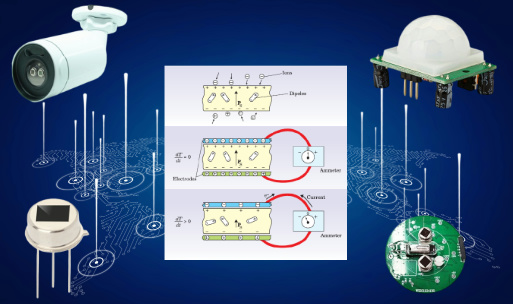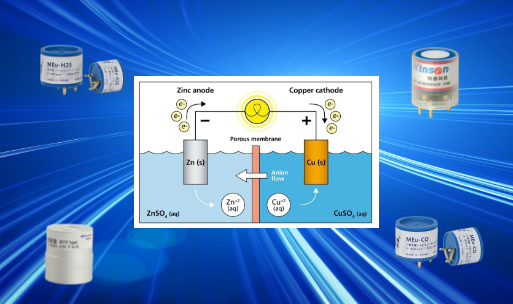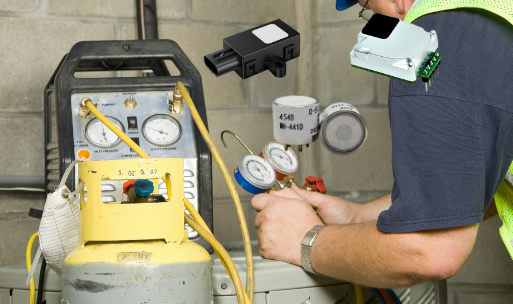Sensor Solutions for Leak Detection of Next-Generation Refrigerant Gases
Refrigerants, also known as refrigerants, refer to the medium substances used in thermal machines to facilitate energy conversion. They are widely used in various fields such as residential air conditioning, refrigerators, freezers, and automotive air conditioning.
From the perspective of refrigerant substitution in the residential air conditioning industry
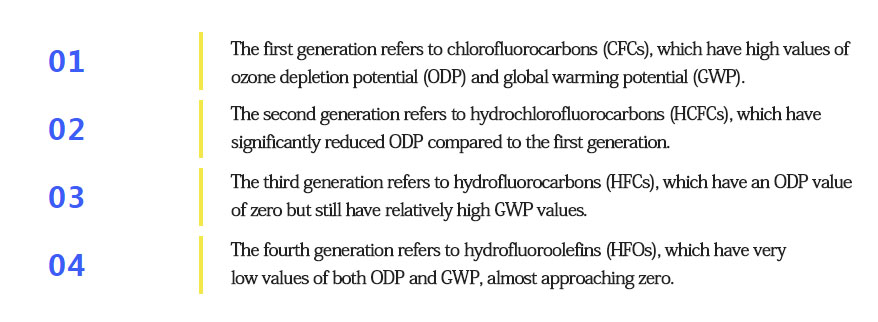
1.Chlorofluorocarbons (CFCs): In the past, CFCs were widely used as refrigerants in various industries, including residential air conditioning. However, it was later discovered that CFCs contribute to ozone depletion and have a significant impact on the environment. As a result, international agreements like the Montreal Protocol were established to phase out the production and use of CFCs.
2.Hydrochlorofluorocarbons (HCFCs): HCFCs were introduced as transitional substitutes for CFCs due to their lower ozone depletion potential. They were considered a temporary solution while industries worked on finding more environmentally friendly alternatives. However, HCFCs also have a negative impact on the ozone layer, although to a lesser extent than CFCs.
3.Hydrofluorocarbons (HFCs): HFCs gained popularity as replacements for CFCs and HCFCs due to their zero ozone depletion potential. They were considered environmentally friendly alternatives and were widely adopted in various industries, including residential air conditioning. However, it was later discovered that HFCs have a high global warming potential (GWP), contributing to climate change.
4.Hydrofluoroolefins (HFOs): HFOs, also known as fourth-generation refrigerants, have been developed as low-GWP alternatives to HFCs. They have significantly lower GWP values and are considered more environmentally friendly. HFOs are gradually being adopted in the residential air conditioning industry as a means to reduce greenhouse gas emissions.
There are currently four commercially available air conditioning refrigerants in the market

R32 refrigerant
R32, difluoromethane, molecular formula: CH2F2, is a new type of environmentally friendly refrigerant. It does not contain chlorine and has no destructive effect on ozone. However, it is flammable and explosive. It is one of the substitutes of R22 and R410A refrigerants.
| Parameter | English Translation |
|---|---|
| Full Name | Difluoromethane |
| Molecular Weight | 52 |
| Critical Temperature | 78℃ |
| Critical Density | 0.430g/cm3 |
| Evaporation Potential at Boiling Point | 390kJ/kg |
| Ozone Depletion Potential (ODP) | 0 |
| Chemical Formula | CH2F2 |
| Standard Boiling Point | -53℃ |
| Critical Pressure (Absolute) | 5.8MPa |
| CAS Number | 75-10-5 |
| Specific Heat (Liquid, 25°C) | 2.35kJ/kg·C |
| Global Warming Potential (GWP) | 0.11 |
Since the GWP of R32 is still high, the current European GWP requirement for new generation refrigerants is not to be higher than 150, which means that from 2025, R32 may be banned in many new EU air conditioning equipment.
Theoretically, promising refrigerants that can replace R32 include fourth-generation refrigerants R1234yf and R290 (propane).
R290 refrigerant
R290 refrigerant, Chinese name refrigeration grade propane, chemical formula C3H8. R290 is a hydrocarbon refrigerant that does not damage the ozone layer at all and has a very small greenhouse effect. It is one of the environmentally friendly refrigerants.
However, R290 refrigerant is more flammable than R32, and its flammability reaches A3 level.
| Parameter | English Translation |
|---|---|
| Full Name | Propane |
| Molecular Weight | 44 |
| Critical Temperature | 96.7°C |
| Ozone Depletion Potential (ODP) | 0 |
| Chemical Formula | CH3CH2CH3, C3H8 |
| Standard Boiling Point | -42.2°C |
| Critical Pressure (Absolute) | 4.25MPa |
| Global Warming Potential (GWP) | 20 |
It is worth noting that the flammability and combustibility of the new refrigerants R290 and R32 add a lot of risk to the installation and maintenance of air conditioners. Once a leak occurs, it may cause paralysis of the refrigeration system, or it may cause suffocation, poisoning, pollution, and fire. An accident may even cause unimaginable consequences.
It is particularly important to accurately, quickly, scientifically and professionally detect leakage faults and take corresponding safeguard measures in a timely manner. Weisheng Technology's refrigerant gas sensor provides a solution for this.
ZP211 refrigerant gas detection module
Semiconductor gas sensors using multi-layer thick film manufacturing processes
Extremely high sensitivity to R290 refrigerant gas
Suitable for refrigerant leak detection in air conditioning and refrigeration systems
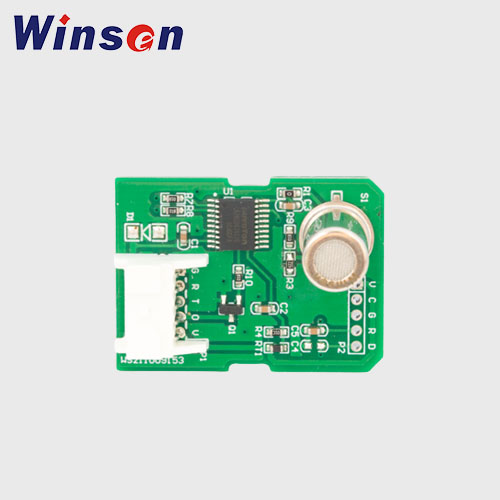
| Target: | Refrigerant gas R290 |
| Model: | ZP211 |
| Detection principle: | Module,semiconductor |
| Characteristics: | High sensitivity,fast response,strong anti-interference ability |
| Size: | 25×34×14.1mm(L×W×H) |
ZP201 refrigerant gas detection module
Detection of refrigerant gas R32
PWM output
Suitable for refrigerant leak detection in air conditioning and refrigeration systems
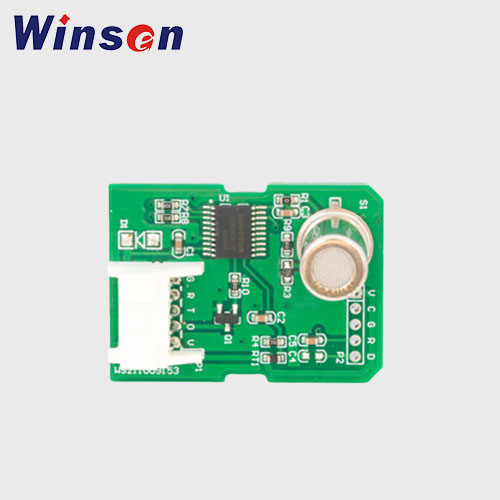
| Target: | Refrigerant gas R32 |
| Model: | ZP201 |
| Detection range: | Alarm value 5000ppm |
| Detection principle: | Module,semiconductor |
| Size: | 25×34×14.1 |
| Working conditions: | Working voltage 5±0.2V Output PWM |
ZRT510 refrigerant detection module
Use the non-dispersive infrared (NDIR) principle to detect refrigerants
Detect R32, R454B refrigerant gas
Suitable for HVAC and refrigeration equipment, industrial processes and safety protection monitoring
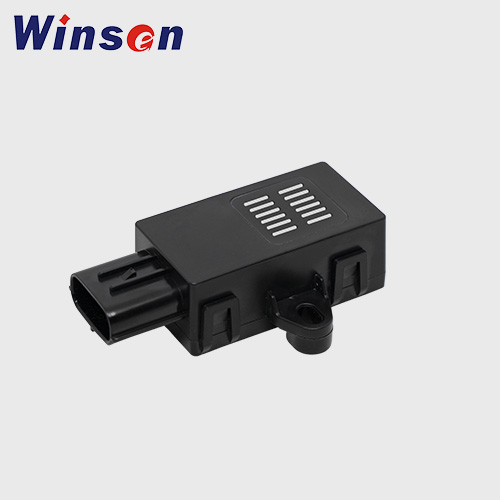
| Target: | R454B, R32, R290, Refrigerant |
| Model: | ZRT510 |
| Detection principle: | NDIR |
| Characteristics: | High sensitivity, high resolution, fast response |
| Size: | 75.4*57*21.5 mm (without connecting cable) |
| Notes: | Compliant with CE, UL 60335-1:2016, UL 60335-2-40:2022 |
MH-Z1542B-R32 infrared refrigerant sensor
A smart infrared gas sensor
Use the non-dispersive infrared (NDIR) principle to detect R32 and R454B refrigerants
Suitable for HVAC and refrigeration equipment, industrial processes and safety protection monitoring
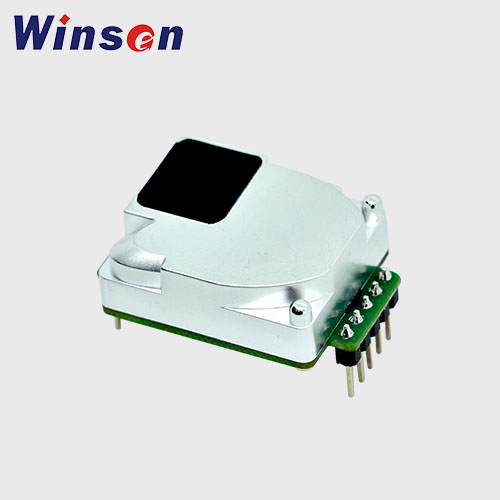
| Target: | Refrigerant |
| Model: | MH-Z1542B |
| Detection range: | 0~5.00% Vol |
| Detection principle: | non-dispersive infrared (NDIR) |
| Characteristics: | High sensitivity, high resolution, fast response,UART output |
| Size: | 32.9x22.3x11.9mm |
